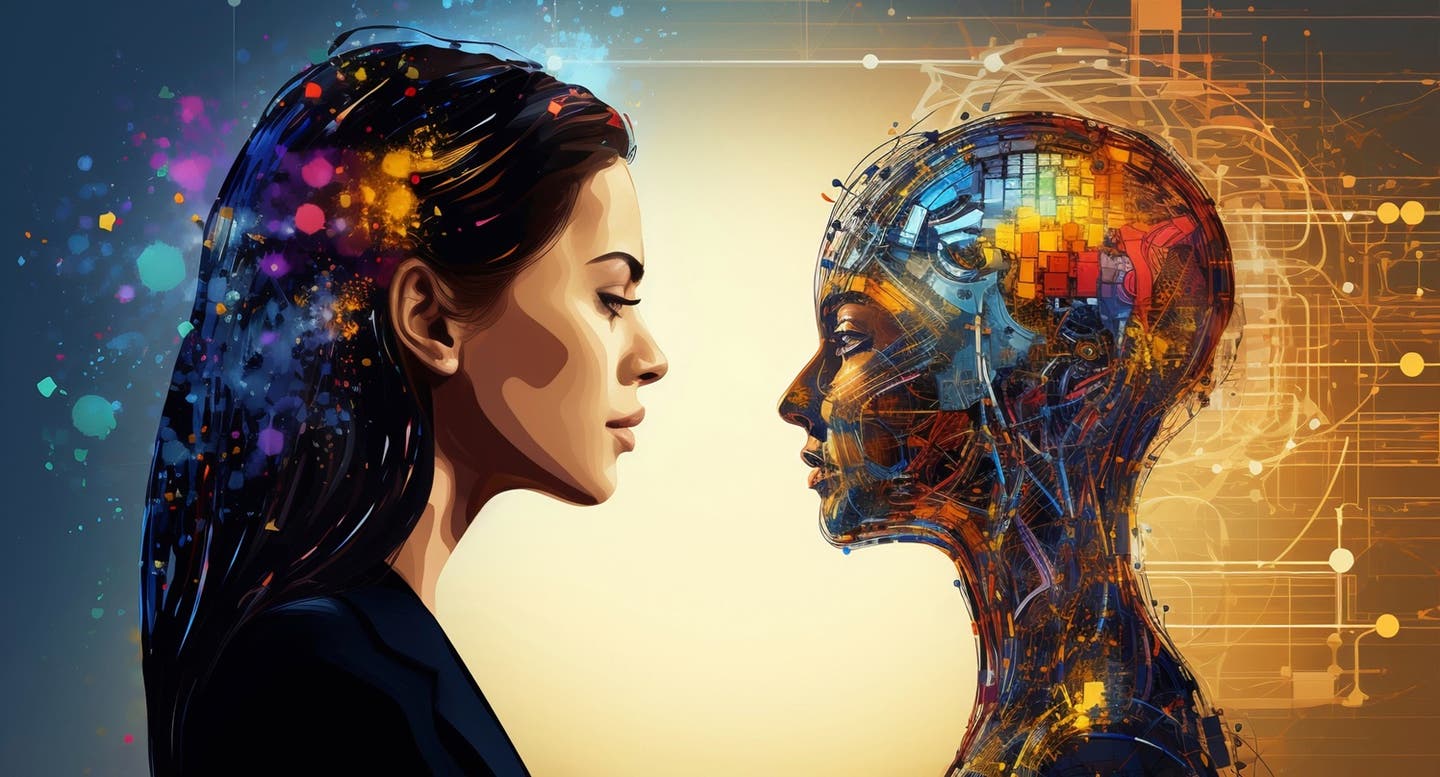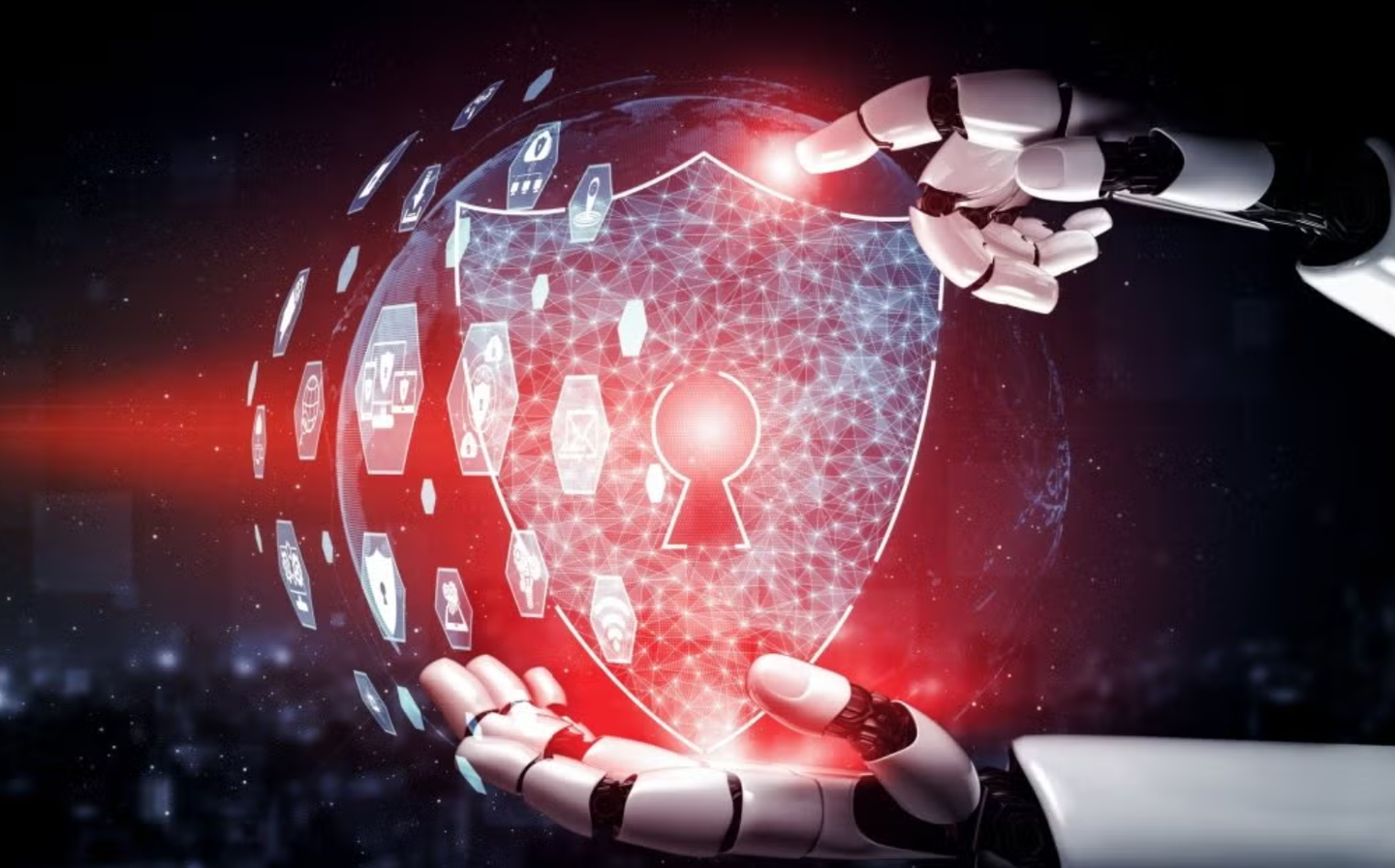Can artificial intelligence truly be creative?
This question — whether artificial intelligence can truly be considered creative — has puzzled scientists for decades.

Study shows people rate AI as more creative when they see how it works, not just the final product. (CREDIT: CC BY-SA 4.0)
A drawing appears on the page. Smooth lines curve into the shape of a vase beside a bowl of fruit. There’s no human hand guiding the pen, only the gentle hum of a machine. But how creative do you think that machine is? New research suggests your answer might depend more on what you saw during the drawing process than on the drawing itself.
This question — whether artificial intelligence can truly be considered creative — has puzzled scientists for decades. Yet as creative AI becomes part of everyday life, understanding how people judge AI-generated art is more important than ever.
Researchers from Aalto University and the University of Helsinki set out to find the answer. They wanted to know what makes people see an AI system as creative. Their study revealed something powerful: the more you see of an AI’s creative process, the more likely you are to call its work “creative.”
Judging More Than the Final Product
In two carefully designed experiments, 90 participants were shown drawings made by two robots. Each robot had a different design, one with a sleek robotic arm and the other with a mechanical plotter style. The drawings were not made using real-time AI generation. Instead, the robots were programmed to reproduce sketches made by a human artist. This ensured that all images were of similar quality, allowing the researchers to focus on human perceptions, not actual machine creativity.
Participants were first asked to judge the creativity of the drawings with no extra information. Later, they were shown videos of the drawing process — lines forming on paper but without the robot in view. Finally, they watched the full process, including the robot physically making the drawings.
Each time more of the creative act was revealed, participants rated the work as more creative. “The more people saw, the more creative they judged it to be,” said Christian Guckelsberger, assistant professor of creative technologies at Aalto University and senior author of the study. “As far as I’m aware, we’re the first to study the effects of perceiving product, process and producer in a separate and controlled manner, not only in the context of AI but also more generally.”
Related Stories
This finding highlights how much our perception of creativity depends on the act of creation, not just the outcome.
Shape Doesn’t Seem to Matter
The researchers also tested whether the shape of the robot influenced creativity ratings. Past studies hinted that people might find certain robot shapes more artistic or advanced than others. However, this study found no such link.
Even though the robots looked different, participants gave similar creativity scores to both. “I think our biggest difficulty was the physical robots themselves,” said Niki Pennanen, the study’s lead author and a psychology researcher at Aalto University. “We did a lot of work with the robots and the drawing process to try to keep everything identical so we could do a scientifically rigorous comparison.”
This result surprised the team. It suggests that how the robot looks — at least in this case — doesn’t shape your sense of how creative its work is. That challenges assumptions in earlier research and opens new questions about what truly matters in human-robot interaction.
What the Findings Mean for the Future
This research doesn’t just inform how people judge machines. It also points to broader lessons about ourselves.
When people rate a robot’s creativity based on how much they see of its process, it exposes a bias. You may think something is more creative simply because you watched it come to life. That insight matters when building future AI tools — especially as more of them enter physical spaces and interact directly with people.
“These findings help address this conflict by giving us a better idea of our own human biases,” said Guckelsberger. “This research makes them a bit more transparent, which is also important from the user’s perspective, for us to understand how a system’s design affects our perception of it.”
There are also deeper ethical questions. Should AI systems be designed to seem more creative than they are, just to keep people engaged? That could be helpful in some creative partnerships. But it could also mislead users into overestimating a machine’s capabilities.
This question becomes even more urgent as embodied AI systems — those with physical bodies and the ability to act in real spaces — become more common. In the last decade, there's been a rapid rise in drawing and painting robots, robot musicians, and even AI-powered performance artists.
Pennanen and Guckelsberger’s study adds evidence to a growing body of work that combines creativity research, human-computer interaction, and robotics. Their study goes further by offering a controlled and repeatable framework for evaluating what makes AI appear creative.
A Longstanding Scientific Puzzle
The question of machine creativity has captured scientists’ interest for over 40 years. Early efforts in computational creativity tried to create algorithms that could produce new ideas, art, or music. More recently, advanced machine learning models like transformers and diffusion systems have enabled AI to generate art, video, and even literary works at a massive scale.
People do seem to respond emotionally to this AI-created content. Studies show that viewers often assign human-like intention to these works. Over the last two years, artists have started to use AI tools more regularly in their creative work. This shift has raised fresh questions: How will AI change the way people make art? Will artists and audiences still agree on what counts as creative?
Guckelsberger and his team believe that exploring those questions starts with understanding how people interpret creativity in machines. This is sometimes referred to as the Lovelace effect, named after Ada Lovelace, a 19th-century mathematician who predicted that machines might someday appear to think for themselves.
Epstein and colleagues at Stanford argue that understanding this effect requires input from psychology, law, economics, and culture. “Understanding the impact of generative AI — and making policy decisions around it — requires new interdisciplinary scientific inquiry into culture, economics, law, algorithms and the interaction of technology and creativity,” they wrote.
The Aalto University research contributes to that conversation by giving concrete data on how people perceive creative AI systems — and what factors influence those perceptions most.
Next Steps and Open Questions
Though revealing more of the creative process increased perceived creativity, the study also highlighted that not all factors are fully understood. For instance, researchers noticed that likeability of the robot and previous experience with AI might also play a role. These findings were exploratory but open the door for more in-depth studies in the future.
The team plans to test whether the same results hold in other art forms, like music or dance. They also hope to learn more about how different user traits — such as familiarity with robots or personal artistic experience — affect creativity judgments.
To help others build on their work, the team used open science methods, making their data and methods available for replication. As creative AI systems become more common in daily life, understanding how design influences perception will be key not only for fair evaluations, but also for trust and adoption.
And as this study suggests, learning what shapes your judgment of machines may teach you something about how you judge creativity in humans, too.
Research findings are available online in the journal ACM Transactions on Human-Robot Interaction.
Note: The article above provided above by The Brighter Side of News.
Like these kind of feel good stories? Get The Brighter Side of News' newsletter.



